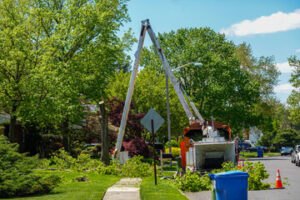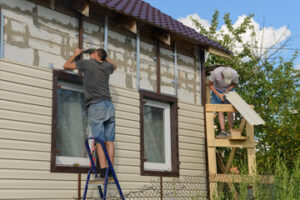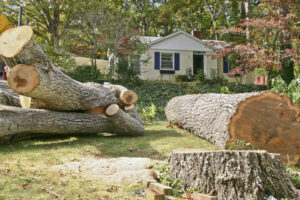Fencing is a martial art that’s often mistaken for a violent sport, but it can actually be a great way to improve your health and wellbeing. It’s an exciting, fun and safe sport that requires precision, agility, balance and flexibility.
Fencing is played on a piste, which is basically a small court. There are a few different types of fences that can be used depending on the type of match. Click Here to learn more.

Fence is a form of protection that has been used since humans began to settle in the world. It is an incredibly common part of the human experience, and can be found in almost every culture around the world. It is an elemental component of civilization, and a look back into its history gives us a better understanding of the modern world we live in.
The first fences were created with a desire to protect crops, livestock and property from threats both natural and manmade. As civilizations grew and evolved, the types of fences that people built changed, but the basic concept did not. The need to protect what one owns from the outside world still exists, and is at the root of most forms of fencing that exist today.
As people settled into sedentary lifestyles, and cultivated food sources to sustain themselves and their families, the need for protection increased. Early fences were rudimentary barriers made from branches, rocks and other materials, but as civilizations continued to develop, fences became more sophisticated. When the Industrial Revolution came along, a new component was added to fencing: barbed wire. This development allowed fences to be more effective in keeping animals and people inside of the enclosure, and also protected against predators that would otherwise destroy crops or kill the livestock.
Fencing has taken on a wide variety of cultural implications, as well. It is often seen as a way to establish and mark ownership of an area, as a means of physical protection for the property that is enclosed, and even as a way to divide neighborhoods within cities in order to delineate cultural or religious communities.
The sport of fencing is generally regarded to have begun in the 16th Century, with the development of the foil, epee and sabre, the three main weapons that are utilized in the sport today. The foil is a light weapon, designed for thrusting, the epee is a heavier weapon that allows both thrusting and cutting, and the sabre is a more flexible sword that is capable of both cuts and thrusts.
Rules
Depending on where you live, the laws that govern fences differ. Local governments or homeowners associations (HOAs) may have rules about who owns a fence between properties, how close a fence can be to property lines and even the types of materials and colors that are allowed. In some places, a homeowner who fails to follow these rules could face fines or even legal action.
Knowing and understanding these rules is essential for fence delineation, legal compliance and peaceful relationships with neighboring land owners. Moreover, a solid grasp of property line regulations can help prevent trespassing on your neighbors’ land without them even being aware of it.
In many areas, it is acceptable to build a fence right up to the property line, as long as you and your neighbors agree upon which side of the fence is yours. However, if you put up a fence and your neighbor has been traversing your land to get to their own since before the fence was built, they might be able to use the legal principle of “adverse possession” to claim your part of the yard as their own.
HOAs may also have rules about how close a fence can be to the property line or other structures, and about whether they need to be set back from sidewalks, streets and driveways. These rules are meant to ensure that a fence does not interfere with public utilities or impede access for emergency services. Some subdivisions also have rules about the type of material that can be used for a fence and about its height. If your neighbor builds an ugly fence that violates these rules, or if they build a fence that bothers you because it is too close to your own, you might be able to notify them about the law and ask them to change it.
In a fencing match, the object is to hit your opponent with a sword while avoiding being struck yourself. The sport is typically contested one on one, although team events exist. The most common weapons are the epee, the heavy cutting sword, and the foil, which is lighter and designed for thrusting. Fencing matches are usually contested over three three-minute rounds, and the winner is the first to score a certain number of points.
Equipment
Fencing is a way to protect property from intruders. It can be made out of wood, metal or wire and can be used to keep people, pets, livestock, and crops away from certain areas. Fences can also serve as a decorative perimeter. In many areas, fences are regulated to specify height, materials and setbacks.
Whether you’re building a new fence or repairing an existing one, having the right equipment will help you complete the job faster and more accurately. The following are some common tools used by fence contractors:
A post hole digger is a tool that drills holes into the ground for fence posts. You can use a manual or gas-powered digger to dig post holes. A shovel is helpful for digging gravel and dirt into post holes, as well as clearing debris from the work area.
Fence pliers are multi-purpose tools that can cut, hammer and grip components simultaneously. Fence pliers are useful for both metal and wooden fence installations and repairs.
Fence stretcher bars are long bars with hooks that you hook onto a fence section to tighten and secure it. These tools are used to evenly distribute tension during fence installation and repair, keeping the structure structurally sound and preventing sagging.
For electric fences, an electrician’s tool bag is needed to hold wires, voltmeters, and other necessary accessories. An electrician’s tool bag also includes a pair of insulated gloves to protect your hands from electrical shock while working on live circuits.
A chain link fence is a type of fence that uses metal links to create a barrier. These fences are typically made of galvanized steel or coated with vinyl to provide rust resistance and increased durability.
An animal fencing device is a tool that helps you contain livestock or other animals, such as pigs or goats. These devices are often woven together or attached to trees to prevent livestock from wandering.
Fences are commonly built around high-voltage machinery, such as transformer stations and mast radiators, to prevent accidents or fires. A low fence of plastic sheeting is sometimes used to restrict movement of amphibians or reptiles in such areas.
Training
Fencing is a sport that accommodates many different fitness levels and stages in life. Whether one decides to fence as an adult hobby or to pursue national honours, a disciplined approach to training will enable the athlete to achieve the strength and skill required.
Warm-up exercises are essential for fencing to get the blood flowing and prepare the body for fast, explosive movements. A focused warm-up is also vital for injury prevention and helps to mentally prepare the fencer for the match ahead.
Low-intensity cardio exercises like walking or low-speed cycling are great to start with to get the heart pumping. As you progress, high-intensity interval training is ideal, which involves short periods of intense exercise followed by recovery time. Examples of this type of workout include sprinting, shuttle runs with cones or using the battle ropes.
Strength training is also important for the upper body and back muscles, as well as the core. Exercises such as delt raises, dumb bell rows and split squats are all effective at building strength for fencing. Unilateral leg work is also beneficial to help with quick reactions from the back foot during an attack. Targeting hamstring strength is also important to prevent injury as the leg is used as the primary launching point for a lunge at your opponent.
A fencing coach is a valuable asset for any athlete, but it’s particularly important during competition season. The coach can provide the fencer with a detailed strategy for each match, and will work closely with the fencer to keep them on track with training.
Dog owners can minimize the risk of fence aggression by implementing basic obedience training, and creating a safe environment for their animal to interact with the fence. Recognizing the early signs of fence aggression can also help to avoid the frustration and arousal that can lead to unwanted behaviors like barking and lunging at the fence line.
As with any sport, it is important to have a strong mental game and not let the results of a match or competition define you as a fencer. The journey to competition is the important part and it’s essential that you enjoy the experience, even if your results don’t meet your expectations.








